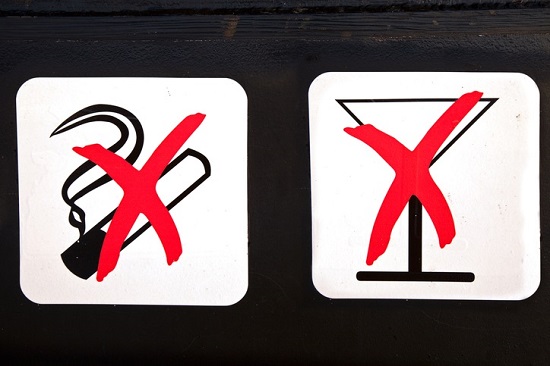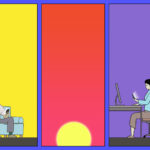Imagine standing at your kitchen counter, pouring crisp, pale, chilled sauvignon blanc into a glass measuring cup to the one cup mark, then pouring that amount into a wine glass. You have resolved to limit your drinking to federal guidelines: 3 drinks tonight, no more than a total of 7 drinks this week. You’re healthy, at home, and not driving, so you’ve allowed yourself a generous 8 ounces, 3 ounces beyond the 5-ounce measure of a standard glass of wine.
Note your awareness of the need to drink this amount and no more. Sense your willingness to make responsible choices and to be accountable for them by tangible measures.
Bring the wine glass to your lips, take a sip, hold the coolness in your mouth, then swallow. Tilt your head back in near ecstasy at the first hint of alcohol’s initial euphoric effect. Chop vegetables for stir fry, continuing to sip.
Let’s say each sip measures about a tablespoon. In 16 sips, about 1 sip every 2 minutes, that cupful of wine is done in a half hour. You’ve only just finished the food prep. You measure and pour another cupful of wine, cook various combinations of foods with various spices and sauces, and find this second glass gone. You arrange your meal on a plate, measure and pour the third glass of wine, fill a glass with water, and place all three at your seat for dinner.
Alcohol’s initial euphoric effect has passed and you feel its warm, sedative glow. You may or may not be aware of the uncertainty it has brought to your decision-making. You’re not sure how long you’ve been eating, but the third glass of wine is gone and you still have part of your meal left. You dutifully switch to water and pair sips of it with the rest of your meal, sensing with disappointment water’s dulling effect on flavor.
Clear the table and view the kitchen. Pots, dishes, utensils, peels and spills everywhere. And on the counter is the rest of the bottle of wine by its glass measuring cup – intentionally glass instead of metal in case pouring the wine first into metal might interfere with its taste.
Pick up your wine glass, walk over to the counter, and place it by the measuring cup. Look at the wine left in the wine bottle, the measuring cup, and the empty wine glass.
Know with the entirety of your mind, heart and body that you are not going to pour wine into the measuring cup and that you are not going to pour that measure into the wine glass. Feel the power of who you are and what you can do rise within you. Remember your credentials and successes, envision the faces of everyone you love and who loves – even admires – you. Revel in the power of your intelligence, knowledge and experience to guide and lead you, and in your willpower to make choices in your best interests. Feel your heart swell with compassion for yourself and all beings everywhere. Lift your shoulders and shift your weight to feel the strength and health of your body.
Pour the rest of the wine directly into the wine glass.
Feel the horror of knowing you are no longer who you were.
Bring the wine glass to your lips.
Image: iStock
What It’s Like to Be Abstinent
What I Know After 4 Years of Sobriety





